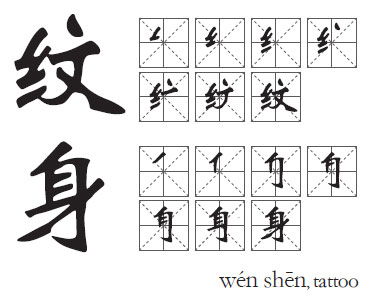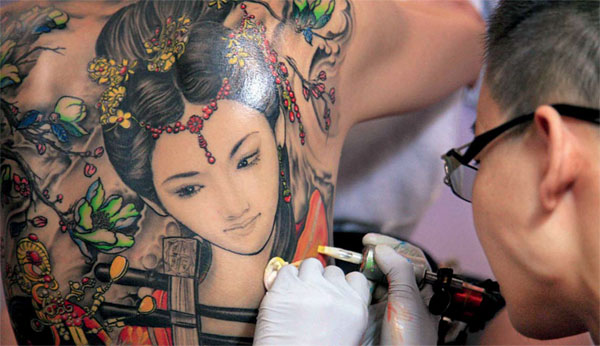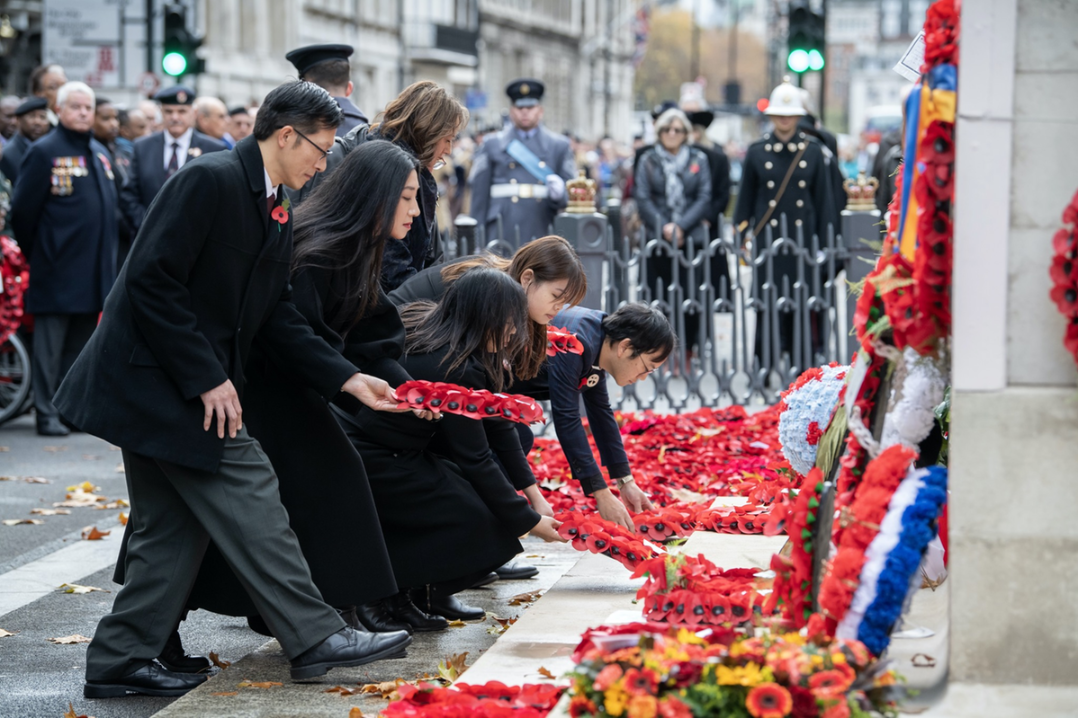A culture that is skin deep

Chinese tattoo artists are searching for their style in an increasingly crowded industry
"You can see," says Curt Li as he lifts his shirt. "My dragon is not a Chinese dragon. It has a human eye, right? So, it's not a kind dragon, it's an evil dragon. Basically, I wanted a dragon, but I didn't know dragons should have circular eyes."
Li, a Beijing native, runs He Tattoo in the capital's glitzy Sanlitun district. He has a team of five artists, each with their own specialty, be it photo-realism or traditional Asian styles.
| Tattoo art has gone from taboo to a full-blown industry in China. Photos provided to China Daily |

After several years now in the mainstream, Chinese tattooing is settling in for a successful future, with experts rising in every field, from traditional American styles to ever-popular Japanese styles.
While Japanese and traditional Asian tattoos are extremely strict - right down to the chrysanthemum leaf - most who walk into Li's shop are less interested in the tradition than just getting some ink, be it sexy or scary.
Indeed, while tattoos have been in China for some time, modernity has ended much of the stigma that used to be attached to them in the Middle Kingdom.

One door down from He Tattoo is New Tattoo, where Chen Jie - a woman in a largely male-dominated profession - has inked her way to a fine reputation over the past 11 years. "I like the Chinese style, but I want my own style," she says. "So I combine my style with Chinese."
Chen, who shows off the work of her colleagues on her shop's Instagram account to allow potential customers to see their skills and expertise, thinks the tattoo industry in China has nowhere to go but up. "In China, it will get more popular, and in five to 10 years it will get better and better," she says.
What was once a niche industry has turned fiercely competitive, a world where reputation is as important and mistakes are as permanent as the ink in the skin.
Today, there are more than 40 tattoo parlors in Sanlitun alone, according to Li.
In just a few short years, tattoo art has gone from taboo to a full-blown industry.
Shanghai Tattoo Festival, for example, which opened in early October at the Shanghai Everbright Convention and Exhibition Center, covered about 5,500 square meters and attracted more than 20,000 artists and enthusiasts.
"It's kind of a starting point for the tattoo industry (in China)," says Fu Hailin, an established tattooist in Shanghai. "Someone has to take that difficult first step. ... We see an opportunity and a demand to carry forward Chinese culture - as to whether or not it makes money is not important right now."
Tattoo festivals, such as the one in Shanghai and another to be held soon at the Nanning International Convention Center in the Guangxi Zhuang autonomous region, are a great place for new artists to show off their talent and learn from the best from around the globe.
China's biggest cities already boast an impressive list of A-listers in the industry. And more shops are popping up in smaller cities across China, too, with better and better artists.
However, tattoo art in China did not begin with the advent of the modern tattoo parlor.
Some of the earliest examples of come from around the fourth century BC, where the ancient barbarians of the West were depicted in the Book of Rites (《礼记》) as having tattooed bodies and unbound hair. Indeed, fans of Chinese literature might have noticed that the great tome, The Water Margin, features criminals with face tattoos.
Information on tattoos from this period suggest they were something of which to be ashamed - something barbaric, a defacement of the body or the mark of a criminal.
The place where tattooing was most common in ancient China was on the island province of Hainan, home to the Li ethnic group. There, tattoos were not confined to the face; they began with the neck, moved to the face, and then went on to cover the legs and arms. Men usually had three small circle tattoos on their wrists (for medicinal purposes), but the women were covered in tribal designs of thick lines on the hands, arms, feet, legs and face.
While they may not be an example of the most technically proficient tattoos of ancient China, they are a testament to a time when this simple art of inking was an indelible cultural practice.
The government certainly seems to think so, trotting out tattooed Li women - some in their 70s and 80s - to be admired at the 2012 Shanghai Expo.
Courtesy of The World of Chinese, www.theworldofchinese.com
The World of Chinese

(China Daily European Weekly 01/01/2016 page28)
Today's Top News
- New engine powers cargo drone expansion
- China to boost intl cooperation on green tech
- Factory activity sees marginal improvement in November
- Venezuela slams US' 'colonial threat' on its airspace
- Xi: Strengthen cyberspace governance framework
- Takaichi must stop rubbing salt in wounds, retract Taiwan remarks































